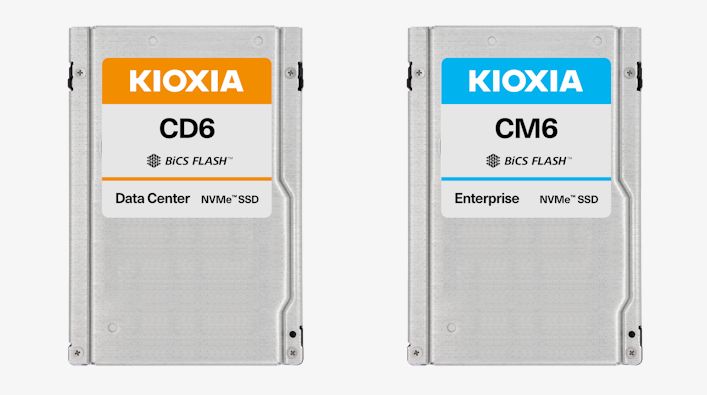Another huge 31TB SSD has just been released, but it won't be cheap
Kioxia joins select group offering high capacity SSDs

Until now, the select group of companies offering the largest solid state drives in the world included only Samsung, Intel, LiqidElement and Nimbus Data (responsible for the 100TB Exadrive).
However, this exclusive group now has a new member. KIOXIA, formerly known as Toshiba Storage, has unveiled the CM6 - a 30.72TB SSD.
It is the second drive of its capacity to come with PCIe 4.0 technology, after the Samsung PM1733 launched in August 2019. It targets the enterprise market and uses Kioxia’s 96-layer TLC NAND chips.
- These are the best external SSD on the market
- Check out our list of the best SSD for cryptocurrency mining
- We curated the best external hard disk drives right now
The drive comes in a 2.5-inch form factor but is 15mm thick. Sequential reads and writes are excellent (on paper) at 6.9GBps and 4.2GBps respectively, with random IOPS reaching 1.4M on read performance and 0.17M on write.
Write endurance stands at one drive write per day or about 1PB per month, which is in line with the competition. Security and encrypt features include TCG Opal and Ruby, with FIPS 140-2 certification on the way.
KIOXIA hasn't revealed the price of the 30.72TB model, but says it will have “excellent cost performance compared to equivalent SATA drive”. OEM will determine the final pricing.
As a comparison, the Samsung PM1643, a 30.72TB SSD launched a couple of years ago, currently sells for less than $8,500 (roughly £6,500) in the US via ServerSupply. The drive has much lower read/write performance, so we expect the CM6 to retail for far more.
Are you a pro? Subscribe to our newsletter
Sign up to the TechRadar Pro newsletter to get all the top news, opinion, features and guidance your business needs to succeed!
- Keep you precious data safe with the best cloud backup services of 2020

Désiré has been musing and writing about technology during a career spanning four decades. He dabbled in website builders and web hosting when DHTML and frames were in vogue and started narrating about the impact of technology on society just before the start of the Y2K hysteria at the turn of the last millennium.